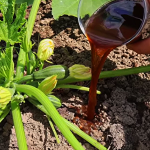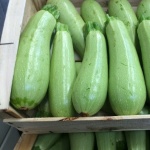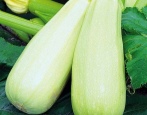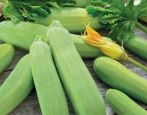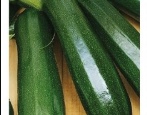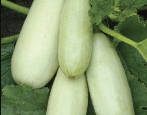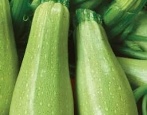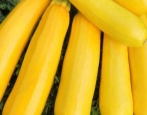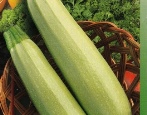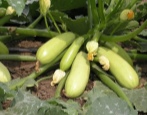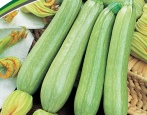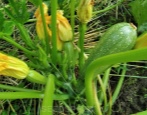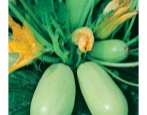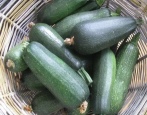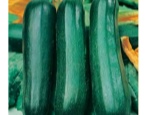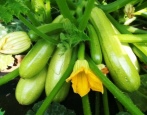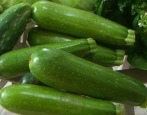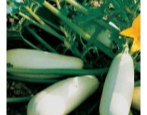
- Authors: Kushnereva V.P., Khimich G.A., Zharova V.P., Ushakova G.N., Korganova N.N.
- Year of approval: 2011
- Ripening terms: early maturing
- The period from germination to harvest: 45 days
- Description of the plant: compact
- Leaves: small, green, without spotting, dissected
- Fruit shape: in technical ripeness cylindrical
- Fruit color: light green
- Color of the pulp: white
- Pulp (consistency): dense, juicy, thick
Zucchini variety Kornishonny was bred by breeders V.P. Kushnereva, G.A. Khimich, V.P. Zharova, G.N. Ushakova, N.N. Korganova. After the crop was approved for use in 2011, it has earned a lot of positive feedback from gardeners. They note, first of all, the high yield of the variety, its early maturity and excellent taste.
Description of the variety
Zucchini Gherkin is intended for growing in the open field. It belongs to the early maturing high-yielding varieties. Differs in keeping quality without loss of presentation and taste. It is characterized by resistance to cold and temperature extremes, good immunity to various diseases. Recommended for cultivation in the Central region.
Characteristics of the appearance of plants and fruits
This variety is characterized by powerful compact non-creeping bushes. The pubescence of the plant petiole is average in its rigidity. The leaves are small, dissected, green in color, without spotting.
Fruits at the stage of technical ripeness have a cylindrical shape. They are short, 17–20 cm long, of medium diameter. The mass of one zucchini reaches 0.5-1.1 kg. Fruits of the Kornishonny variety are light green in color with a slightly ribbed surface and a thin skin. Seeds are medium in size, cream in color, elliptical in shape.
Purpose and taste
The flesh of the fruit is white. It is juicy, dense and thick. The variety is characterized by good and excellent taste. The dry matter content is only 5-7%.
Gherkins are universal, they are used for all types of processing. At the stage of technical ripeness, they are ideal for canning whole fruits. Stores well when frozen and stored for a long time.
Ripening terms
The early ripening variety Kornishonny has a period from germination to harvesting of about 45 days. This culture has a long fruiting period.
Yield
The Kornishonny zucchini is characterized by a high yield. Average rates are 214–673 c / ha. Since the variety is characterized by amicable long-term fruiting, it is suitable for industrial cultivation.
Growing and care
This culture is easy to grow even for novice gardeners. In late May - early June, the seeds are planted in a place well warmed by the sun, protected from the winds. The recommended seeding depth is 3-5 cm. The planting scheme suitable for the Kornishonny variety is 70x70 cm. In the seedling method, young plants are planted in open ground at the age of 14-25 days.
Care consists in timely watering and loosening the soil. We must not forget about the regular destruction of weeds, since they not only disrupt the nutrition of the plant, but can also be sources of disease. Gherkins respond well to fertilizing with mineral fertilizers.
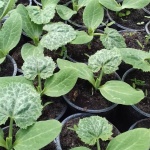
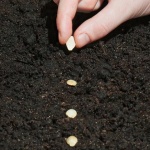
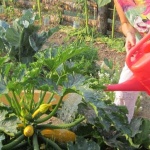
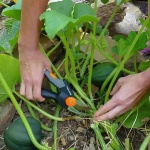
Soil requirements
Fertile loose soil is ideal for this variety. It is imperative to apply organic fertilizers, which significantly improve its structure. In autumn, when digging, humus or compost is placed in the ground, in no case should fresh manure be used.
Fertilizing with mineral fertilizers is associated with a specific phase of growth of Gherkin zucchini. 1.5 weeks after sowing, it is recommended to introduce nitrogen into the soil together with organic matter to build up the green mass of young plants. During the appearance of inflorescences, a solution of boric acid, yeast and iodine feeding are effective, and at the time of flowering, zucchini must be added to the root of potassium, phosphorus and nitrogen. When fruiting, it is better to use organic matter and safe mineral compounds, for example, urea, superphosphate and potassium preparations.
